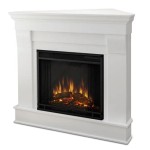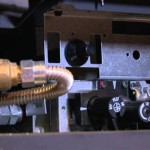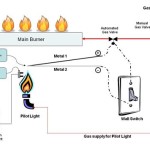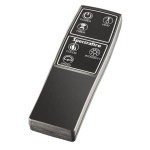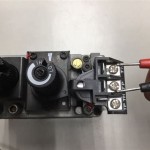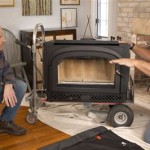Fake Cardboard Fireplace Decorations: A Practical Guide
Cardboard fireplace decorations offer a visually appealing and affordable alternative to traditional fireplaces. They provide a focal point in a room, especially during holidays or colder seasons, without the cost, installation challenges, or safety concerns associated with real fireplaces. This article examines the materials, construction methods, design considerations, and customization options related to creating convincing and aesthetically pleasing fake cardboard fireplace decorations.
The primary advantage of cardboard fireplaces lies in their accessibility and budget-friendliness. Cardboard is readily available, often free from discarded boxes, and the construction process requires only basic tools such as a utility knife, ruler, glue, and paint. This makes it an ideal project for individuals seeking an inexpensive way to enhance their home decor. Furthermore, cardboard fireplaces are lightweight and easily movable, allowing for flexible placement within a room and simple storage when not in use.
Materials and Tools Required
The successful construction of a cardboard fireplace hinges on selecting appropriate materials and having the necessary tools. The primary material is corrugated cardboard, with thicker, double-walled cardboard providing greater structural integrity and a more realistic appearance. Various sizes and thicknesses of cardboard may be used for different components of the fireplace, with sturdier pieces reserved for the mantle and base.
Beyond cardboard, essential tools include a sharp utility knife or box cutter for precise cutting, a metal ruler or straight edge to ensure straight lines, and a cutting mat to protect surfaces. Strong adhesive options include hot glue guns for quick bonding, wood glue for a more durable connection, and packing tape for reinforcing seams. Paint, primer, and decorative finishes are crucial for achieving the desired aesthetic, and additional materials such as faux bricks, stones, or wood grain contact paper can enhance the realism of the fireplace.
Construction Techniques and Assembly Methods
The construction process typically begins with planning and design. It is advisable to create a scaled drawing or template of the desired fireplace dimensions. This blueprint serves as a guide for cutting the cardboard pieces to the correct size and shape. Common shapes include a rectangular base, upright side panels, a mantel shelf, and a back panel.
Cutting the cardboard accurately is paramount to achieving a professional finish. Using the metal ruler and utility knife, carefully score along the lines of the template before fully cutting through the cardboard. This prevents jagged edges and ensures clean, precise cuts. Once all the individual pieces are cut, they can be assembled using glue and tape. Hot glue is suitable for tacking pieces together quickly, while wood glue provides a stronger, longer-lasting bond. Packing tape can be used to reinforce seams and joints, particularly on the inside of the fireplace, where it will not be visible.
Assembly typically involves attaching the side panels to the base, followed by the back panel. The mantel shelf is then attached to the top of the side panels, creating the characteristic ledge above the firebox opening. Care should be taken to ensure that all pieces are aligned correctly and securely fastened. Any gaps or imperfections can be filled with cardboard shims or adhesive filler.
Design Considerations and Customization Options
The design of a cardboard fireplace is limited only by imagination and available materials. Numerous design options exist, ranging from simple, minimalist styles to elaborate, ornate facades. Factors to consider include the overall dimensions of the fireplace, the shape and size of the firebox opening, and the style of the mantel. Proportions should be chosen to complement the size and style of the room in which the fireplace will be placed.
Customization options are virtually limitless. Paint is the most common method for transforming the appearance of the cardboard. A coat of primer is essential for ensuring that the paint adheres properly and provides a smooth, uniform finish. Various paint colors and techniques can be used to create different effects. For example, a stone-like finish can be achieved by layering different shades of gray and brown paint and using a sponge or textured brush to create a rough surface.
Faux bricks, stones, or wood grain contact paper can be applied to the firebox opening and surrounding areas to simulate the appearance of real masonry or wood. These materials can be purchased online or at craft stores. Alternatively, bricks and stones can be hand-painted onto the cardboard using stencils or freehand techniques. The firebox itself can be decorated with battery-operated LED candles, a string of fairy lights, or a simulated flame effect created using fabric and a fan.
The mantel provides an opportunity for further personalization. It can be decorated with seasonal items, family photos, candles, or other decorative objects. A garland of greenery can be draped across the mantel during the holidays, adding a festive touch. The addition of decorative molding or trim around the edges of the fireplace can enhance its overall appearance and create a more refined look.
Safety is a crucial consideration when designing and using a cardboard fireplace. Open flames should never be used inside or near the fireplace, as cardboard is highly flammable. Battery-operated lights and decorative elements are the safest options for creating a realistic fire effect. The fireplace should be placed away from curtains, furniture, and other flammable materials to prevent accidental fires. Regular inspection of the fireplace for signs of damage or wear is also recommended.
The stability of the cardboard fireplace is essential, especially if it will be placed in a high-traffic area or a home with children or pets. Reinforcing the structure with additional cardboard supports or wooden bracing can enhance its stability. Sandbags or weights can be placed inside the base of the fireplace to prevent it from tipping over. The surface on which the fireplace is placed should be level and stable to ensure that it remains upright.
The longevity of a cardboard fireplace depends on the quality of the materials used, the construction techniques employed, and the care with which it is maintained. High-quality cardboard, strong adhesives, and careful assembly will contribute to its durability. Protecting the fireplace from moisture and physical damage will also extend its lifespan. When not in use, the fireplace should be stored in a dry, protected location to prevent it from warping or deteriorating.
Troubleshooting Common Issues
Several common issues can arise during the construction and use of a cardboard fireplace. One common problem is warping or bending of the cardboard, particularly in humid environments. This can be minimized by using thicker cardboard, reinforcing the structure with additional supports, and storing the fireplace in a dry location. Applying a sealant or waterproof coating to the cardboard can also help to prevent moisture damage.
Another common issue is difficulty cutting the cardboard cleanly and accurately. This can be addressed by using a sharp utility knife, replacing the blade frequently, and using a metal ruler to guide the cuts. Scoring the cardboard before cutting it fully through can also help to prevent jagged edges. If the cardboard is particularly thick or difficult to cut, a jigsaw or other power tool may be used, but caution should be exercised to avoid injury.
Adhesion problems can occur if the glue is not applied correctly or if the surfaces being bonded are dirty or oily. Ensure that the surfaces are clean and dry before applying the glue. Apply the glue evenly and liberally, and allow sufficient time for it to dry and cure. If necessary, clamp or tape the pieces together while the glue is drying to ensure a strong bond. Using a combination of different types of adhesive, such as hot glue for quick tacking and wood glue for a stronger bond, can also improve adhesion.
Paint application can also present challenges. Uneven paint coverage, streaks, and drips can detract from the overall appearance of the fireplace. To avoid these problems, apply a coat of primer before painting, use high-quality paint, and apply multiple thin coats rather than one thick coat. Use a brush, roller, or spray paint to achieve a smooth, even finish. Allow each coat of paint to dry completely before applying the next coat. If drips or streaks occur, sand them down and repaint the affected area.
Finally, stability issues can arise if the fireplace is not properly supported or if it is placed on an uneven surface. Reinforce the structure with additional cardboard supports or wooden bracing to improve its stability. Place sandbags or weights inside the base of the fireplace to prevent it from tipping over. Ensure that the surface on which the fireplace is placed is level and stable. If necessary, use shims or leveling feet to adjust the height of the fireplace and ensure that it stands upright.

How To Make A Cardboard Holiday Fireplace

Faux Cardboard Fireplace Mantel Jessika Reed

Easy Diy Mini Faux Fireplace Cardboard Gina Tepper

Cardboard Faux Fireplace 6 Steps With S Instructables

Nostalgic Fireplace 3d Cardboard Kit Dino Os Studios Inc

Diy Faux Cardboard Fireplace Easy Instructions

Faux Cardboard Fireplace Mantel Jessika Reed

How To Make A Cardboard Holiday Fireplace

Easy Diy Cardboard Fireplace Decor Ideas For The Home Or Party Decorations Outdoor Holiday Crafts

Faux Cardboard Fireplace Mantel Jessika Reed
Related Posts

